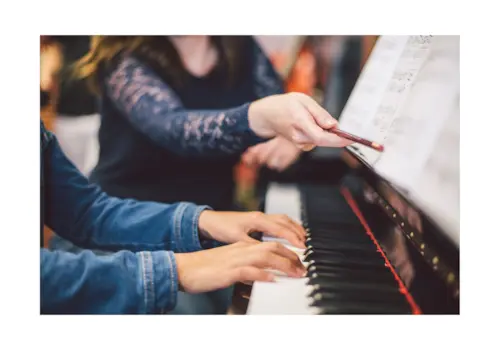We take a look at the second model in Roland's GP series that aims to merge advanced technologies with finely crafted grand piano designs. Have they managed that? Let's take a look...


The GP-6 Baby Grand is available in two finishes: ebony and polished white
It's no secret that Roland is one of, if not the, leading voice in the digital piano world.
The Japanese maker has always been at the forefront of technological piano developments; from introducing the first ever touch-sensitive keyboards in 1974, to co-developing MIDI technology in 1983.
And with that success comes an expectation to continue delivering.
Roland's newest creation comes in the form of its GP series, which they say "represents the pinnacle of Roland piano development, merging advanced technologies with finely crafted grand piano designs that bring elegance and grandeur to any space."
Today, we're taking a look at the GP-6 Baby Grand Piano model. This is the second piano in the series. The first is the smaller GP-3, with the two flagship models being the GP-9 and the GP-9M.
Initial thoughts
The GP-6 catches the eye immediately; not just for its slick polish finish, but also because of its size.
It’s around 55 inches wide and 60 inches high, with the average living room grand piano measuring about 10 inches wider. Its compactness is something that should appeal to those who love the sound and look of a grand piano, but just can’t find space for it in their homes.
Its size intrigued me; it still managed to emanate that 'wow' factor that usually hits you when you set your eyes on a full-sized acoustic grand. I was still cautious, of course, about whether the sound would match up.
The sound
As always with digital pianos, you will never quite get the exact sound of an acoustic piano. But you can get very, very close to it.
The GP-6 utilises Roland's new Piano Reality Approach to sound. It is a complex piano system developed over decades of Roland development, described as mirroring an ‘ecosystem’ of connected technologies all working in unison to get you the best sound possible.
This piano ‘ecosystem’ comprises the sound engine, keyboard, pedals, audio components and speakers. Each section is designed to work together without fault, allowing you, the player, to experience unprecedented expression and realism.

The white finish is, admittedly, absolutely stunning
The verdict?
I was expecting a good, solid sound. What I experienced was better.
Roland describes the piano’s action as a “progressive hammer action with escapement [providing] genuine grand piano touch, coupled with advanced acceleration sensing technology for accurate detection of the subtlest playing nuances.”
In simpler terms, it’s smooth as butter. It’s silky, enveloping, and impressively well balanced. Its touch response is mightily impressive.
I must have sat there for at least an hour, playing piece after piece because I just didn’t want to stop! With headphones on, it’s a wonderful, immersive experience. Without, the five speakers that form part of the Piano Reality ecosystem generate a full, even sound perfect for home performances with friends, or on your own.
Take a listen below.
Lots of appeal for both the no-fuss player and the adventurous player
One of the most welcoming features is the GP-6’s ability to appeal to both those who want a simple, no-fuss digital piano, and also those who want the ability to play around a little more with the piano’s tone and sound.
The piano has a small touch screen panel located in the centre above the keys, with multiple touch buttons located either side. Both the screen and the buttons disappear completely when the backlighting is turned off, giving you the option of maintaining that acoustic aesthetic and eliminating distractions.

How the GP-6 looks with the display on...

...and how it looks with the display off
For those that do want to play around with the sound, there’s plenty of options. There were 15 tones available on the previous GP-3 model. The GP-6 carries 324 ranging from grand piano sounds, to electric pianos, to organs, to percussions and more.
There are also plenty of ambiance options, all of which are completely customizable if you need to make minor adjustments to their default settings. I highly recommend playing around with the Cathedral ambiance. That was a personal favourite.
Additionally, there is hours of fun to be had with the piano designer option. Here, you can refine the tone, response, string tuning, keyboard sensitivity and lots more.
Roland's Piano App: One of the best educational apps out there?

The Roland Piano App is available for both Apple and Android devices
Roland's Piano App is certainly one of the most impressive in the piano app world. It's very easy to connect with the GP-6 model as well. All that is required is a bluetooth connection.
The app gives you access to over 300 pieces of sheet music, orchestral backing tracks for tonnes of popular pieces such as Rachmaninov's Piano Concerto No 2, sight reading and ear training exercises to build your skills, plus the ability to adjust your piano's control functions.
Is it worth it?
In a world where acoustic grand pianos are anything north of £20,000, and day-to-day costs of living are soaring, the GP-6 for around £5,000 could be a really smart investment. Roland also offers a 10-year warranty on all digital pianos, so you don't need to worry about any digital wear and tear in the next decade as Roland will cover it.
The GP-6 Baby Grand Piano represents another home run for Roland.
Find out more here.
All images: ©Roland.








